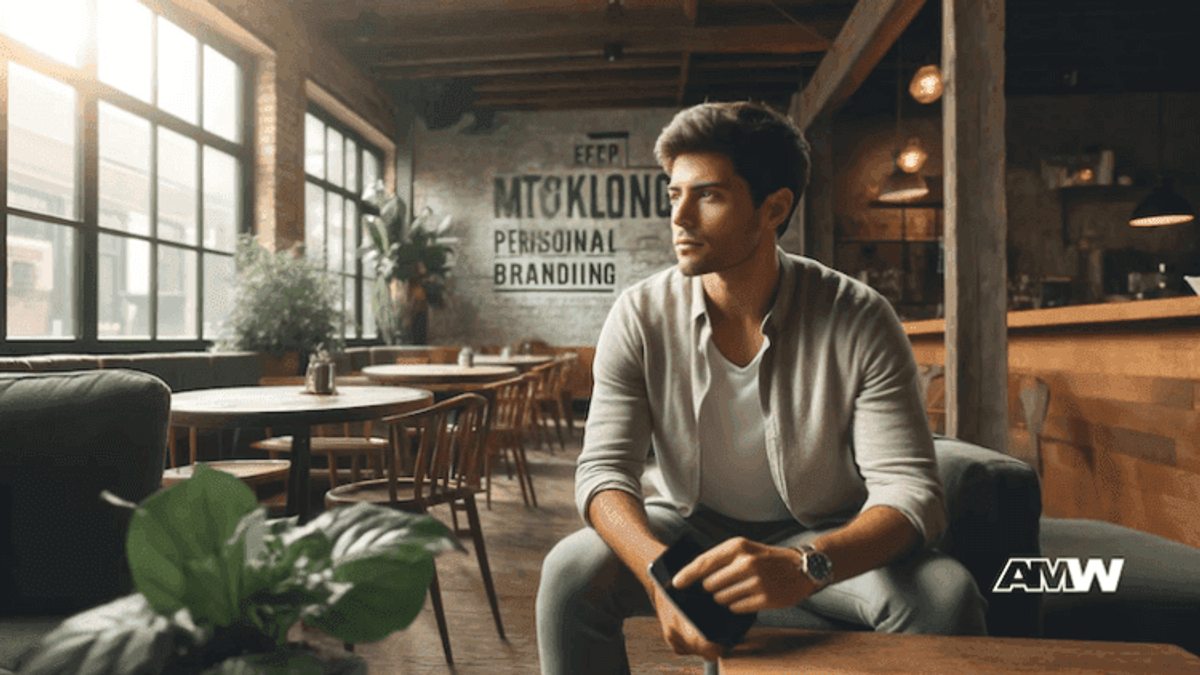Storytelling Techniques to Enhance Your Personal Brand

Imagine you're at a bustling networking event where every conversation is a doorway to new opportunities. You meet two professionals, both in your field. The first one, recounts their recent project experiences in bullet points—efficient yet somewhat forgettable. The second, shares a compelling story about how a creative solution turned a failing project into a triumph. Which person do you remember as you head home?
Quick Summary
At a networking event, storytelling emerges as a vital tool for enhancing personal brands. Instead of listing achievements, professionals should embrace narratives that highlight their core messages and emotional journeys, making their experiences relatable and memorable. Incorporating structured plots and authentic reflections fosters trust, while utilizing various platforms allows for effective communication. By weaving personal tales that resonate with audiences, individuals don't just share
This scenario illustrates the power of storytelling in building and enhancing your personal brand. Stories aren't just for writers or marketers; they're a strategic tool that any professional can use to stand out, connect with their audience, and make their message memorable. Here's how you can harness the art of storytelling to elevate your personal brand.
Identify Your Core Message

Think of your personal brand as your story's theme.
What key message or value do you want to communicate? It's crucial to be clear and concise about what you stand for—this will guide the stories you tell and the message you convey across various platforms.
An independent consultant, uses her personal story of transitioning from a corporate role to entrepreneurship as a vivid example. Her narrative focuses on her adaptability and drive—traits that resonate with her target audience and are central to her professional identity.
By consistently communicating these qualities, she reinforces her brand's strengths and makes it easier for clients to understand who she is and what she brings.
Create Relatable Characters

In personal branding, you are the protagonist. However, creating relatable secondary characters—like mentors, colleagues, or even challenges (portrayed as antagonists)—can enrich your narrative. This technique can add depth to your story, showing how you interact with others and overcome obstacles. Consider a tech start-up founder who frequently incorporates his mentor's early advice into his stories.
By doing this, he humanizes his brand and underscores his ongoing learning and gratitude values. These characters support the narrative arc of your personal journey and help illustrate your development and the impact of your work. They can make your stories more engaging and relatable, providing a fuller picture of your professional landscape.
Use a Structured Plot

Every compelling story follows a clear structure—a beginning that sets the scene, a middle that builds tension through challenges, and an end that resolves the narrative. In personal branding, applying this structure helps clarify your professional journey. Start by outlining where you began in your career, setting the stage for your narrative.
Next, detail the challenges you faced along the way, focusing on how these obstacles provided opportunities for growth and innovation. Finally, conclude with where you are now, highlighting your achievements and the current scope of your work. A graphic designer exemplifies this approach by using her portfolio to narrate each project's lifecycle.
She begins with the initial challenge, details her creative process, and ends with the project's successful outcomes. This method showcases her skills and structures her professional story in a way that is easy for clients and colleagues to understand.
Incorporate Emotions

Emotions are the core of any story that resonates. They transform mere events into experiences that the audience can feel and relate to.
In personal branding, sharing your emotional journey can significantly enhance how you connect with your audience. When recounting your professional experiences, openly discuss the emotions involved—the thrill of tackling a complex problem, the anxiety of stepping into a new role, or the pride in achieving hard-earned success.
A finance professional, effectively uses this technique by sharing his initial fears of public speaking and the exhilaration he felt upon overcoming these fears to deliver a successful pitch.
These emotional elements make his stories compelling and relatable, making his personal brand more engaging and human. Through such emotional storytelling, you forge a stronger connection with your audience and lend authenticity and depth to your personal brand narrative.
Be Authentic

Authenticity is the cornerstone of any compelling personal brand. Sharing true stories and reflecting on your genuine experiences and core values is essential. This transparency fosters trust and credibility with your audience, who are more likely to engage with a brand they perceive as honest and reliable.
Consider a sustainability advocate who openly discusses discovering and implementing sustainable practices. She educates her audience by sharing her challenges and triumphs and demonstrates her commitment to sustainability.
This authenticity in her storytelling enhances her brand's reliability and inspires and encourages others to trust and follow her lead. It's this realness that can turn casual followers into loyal supporters.
Leverage Multiple Platforms

Various platforms can significantly amplify the reach and impact of your personal brand. Each platform serves a different purpose and, thus, can be used to highlight different aspects of your story. For instance, a blog is an excellent medium for sharing longer, more detailed narratives that allow for deeper insight into your professional life and insights.
On the other hand, social media platforms like Instagram or Twitter are perfect for shorter, more frequent updates that keep your audience engaged daily. A real estate agent, effectively uses Instagram to post quick stories and updates about his daily interactions with clients and properties.
This keeps his content fresh and engaging and showcases his active involvement in the real estate market, enhancing his brand's presence and relatability.
By strategically using multiple platforms, you can ensure that different facets of your professional persona are communicated effectively, catering to diverse audience preferences and attention spans.
Conclusion

Storytelling transcends the boundaries of mere artistry; it is a powerful strategic tool in personal branding. When you weave your professional experiences into authentic, emotionally engaging stories that reflect your core values, you effectively enhance your visibility and create a memorable impression on your audience.
This approach doesn't just relay facts; it invites your audience into your world, allowing them to experience your journey alongside you. Remember, in the narrative of your personal brand, you hold the pen. You're not only the main character but also the storyteller.
Each choice you make in telling your story—each triumph, challenge, and moment of growth—adds depth to your professional image. By crafting a compelling and resonant narrative, you do more than share a history; you inspire, connect, and lead. Make your story one that captivates and motivates others to follow and learn from your lead. In doing so, your personal brand becomes visible and influential, defining your professional legacy.
FAQ

How do I start incorporating storytelling into my personal brand?
Start by identifying key experiences in your career that shaped who you are today. Craft a simple narrative around one of these experiences, focusing on the challenge faced, the action you took, and the outcome. This foundational story can be adapted and expanded for different contexts and platforms.
Can storytelling make a difference in professional settings?
Absolutely. Storytelling can transform dry information into engaging content, making it easier for your audience to remember you and your message. It helps you connect with your audience, making your interactions more impactful.
What if I don't have any dramatic stories to share?
Not all stories need to be dramatic. Even ordinary stories can be powerful if authentic and demonstrate your values or skills. Focus on moments of learning, growth, or decision-making that others can relate to or find inspirational.
How long should my brand stories be?
The length of your story should fit the medium and your audience's attention span. A story can be a few minutes long for presentations, but on social media, keep it brief. Think of a compelling couple of sentences for Twitter or a short paragraph for LinkedIn.
Should I use storytelling in job interviews?
Yes, storytelling can be very effective in job interviews. Prepare stories that showcase your skills, accomplishments, and problem-solving abilities. These stories make your responses more memorable and can help interviewers envision you in the role.
How do I ensure my stories resonate with my target audience?
Know your audience and what they value. Tailor your stories to meet the interests and needs of your audience while staying true to your core message. Feedback is also invaluable, so consider how your stories have been received in the past and adjust accordingly.
Is it okay to use humor in my stories?
Humor can be a great tool if appropriate for the situation and your brand. It can make you more relatable and ease tensions. However, use it judiciously and ensure it's inclusive and respectful of all audiences.
Related Articles

Behind Tomorrowland’s Rise to a Multi-Million Euro Cultural Movement
When Tomorrowland Belgium sells out 400,000 tickets across two weekends in less than an hour each year, it's not merely luck or lineup strength driving those numbers. The festival has engineered one o

Philips Bodygroom as a Case Study in Bold Marketing and Consumer Insight
The men's grooming industry has undergone a dramatic transformation over the past two decades, moving from basic necessities to comprehensive personal care routines. Within this evolution, few brands

Inside the Timeless Appeal of America’s Favorite Oat Circles - Cheerios
When General Mills introduced Cheerios to American breakfast tables in 1941, no one could have predicted that these simple whole grain oats circles would become one of the most recognizable brands in


